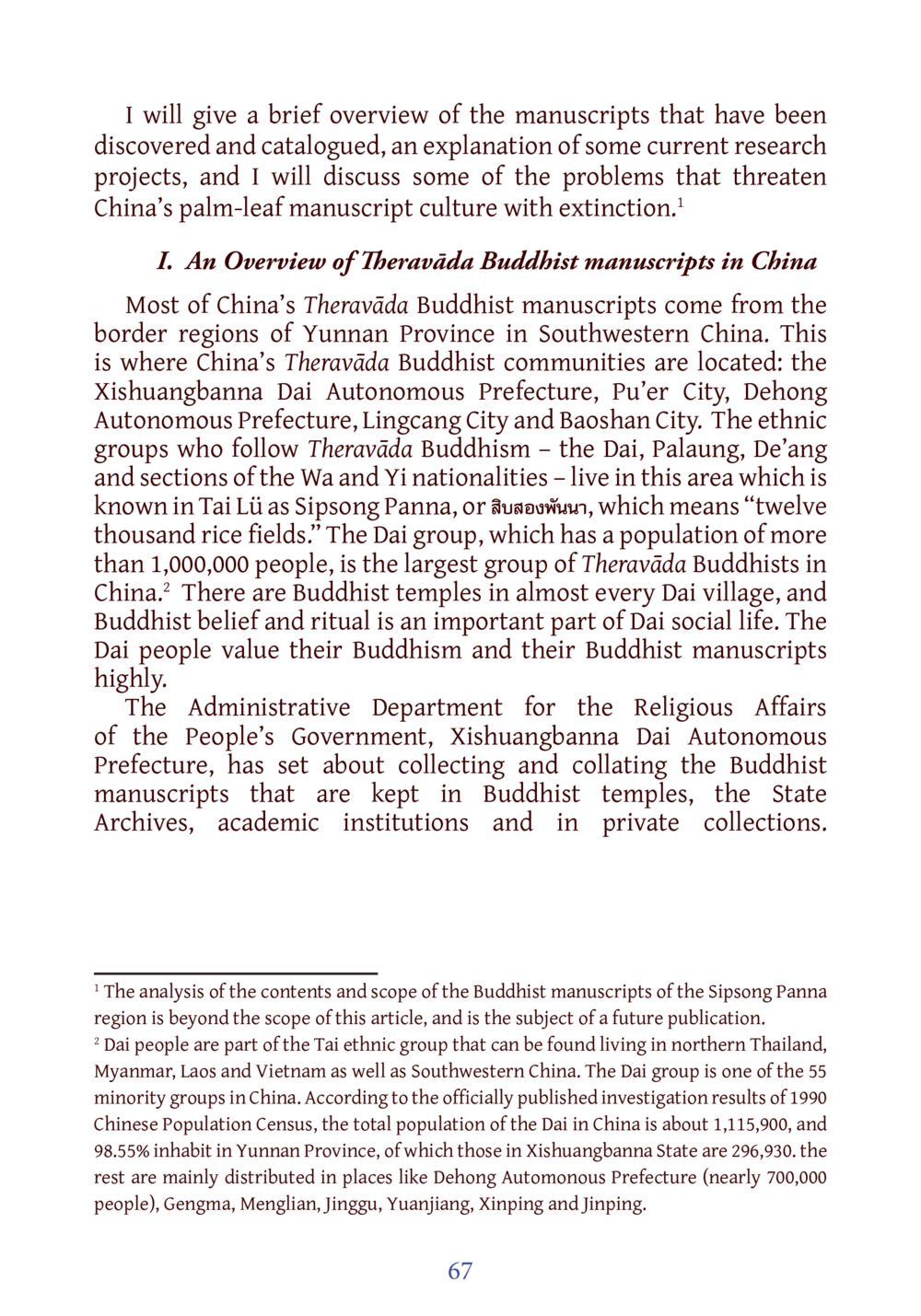Overview of Theravāda Buddhist Manuscripts in China : หน้า 88/141
DIRI Journal : หน้า 88/141 Explore the rich heritage of Theravāda Buddhist manuscripts in Yunnan, China, and the challenges they face.
1 ครั้ง

สรุปเนื้อหา
This document provides an overview of Theravāda Buddhist manuscripts found in China, particularly in Yunnan Province. It discusses the significance of these manuscripts within the Dai community and highlights ongoing efforts by governmental and academic institutions to preserve this cultural heritage. The manuscript culture faces extinction due to various threats, which are addressed in current research projects. The Dai ethnic group, with a substantial population, has a deep connection to Buddhism, reflected in their community practices and the reverence placed on their manuscripts. The government and local bodies are actively working to catalog and protect these important cultural artifacts for future generations. For more details, visit dmc.tv.
หัวข้อประเด็น
-Theravāda Buddhism in China
-Dai ethnic community
-Preservation of cultural heritage
-Current research on manuscripts
-Threats to manuscript culture
ข้อความต้นฉบับในหน้า
หน้าหนังสือทั้งหมด













































































































































